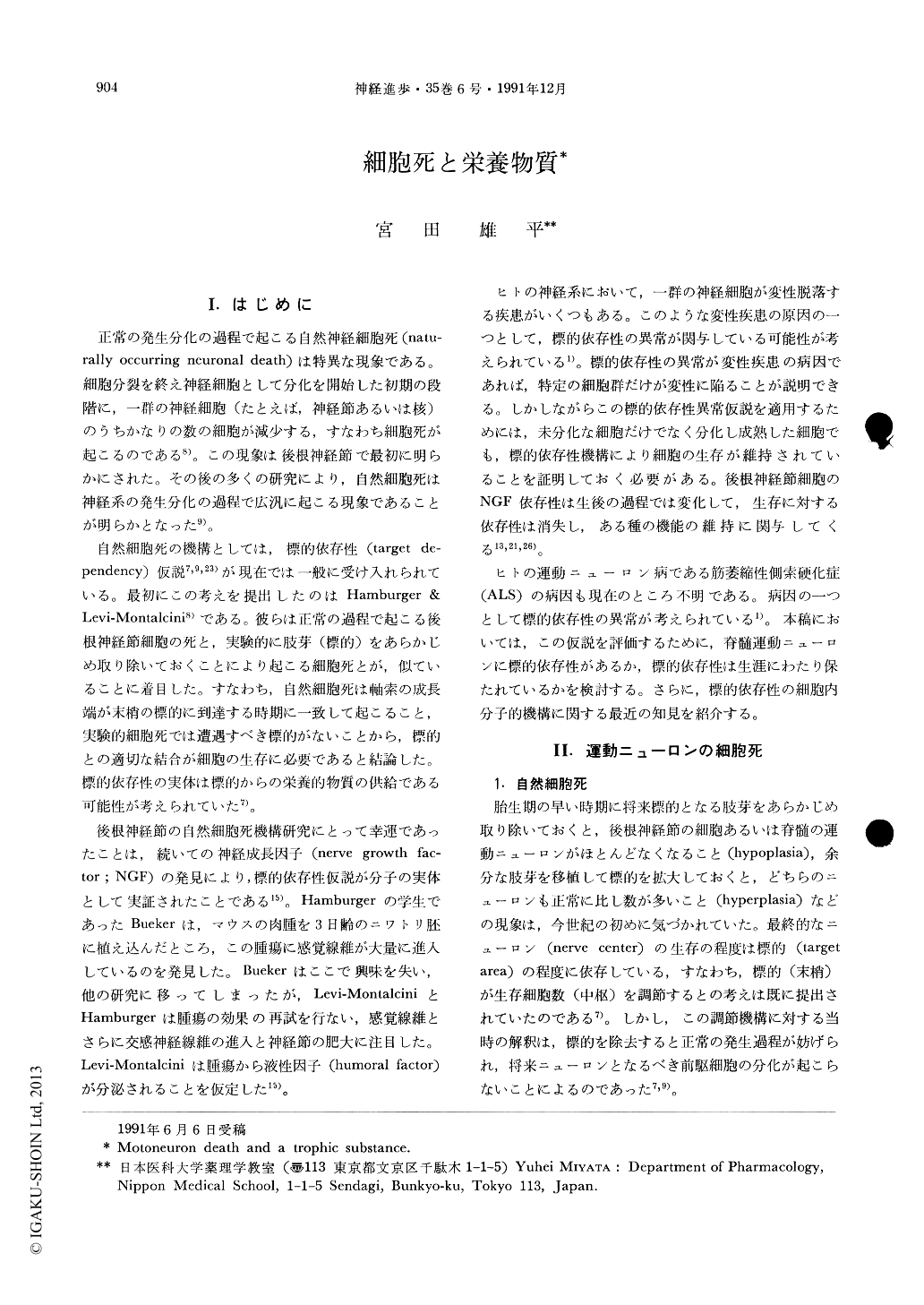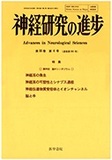Japanese
English
- 有料閲覧
- Abstract 文献概要
- 1ページ目 Look Inside
I.はじめに
正常の発生分化の過程で起こる自然神経細胞死(naturally occurring neuronal death)は特異な現象である。細胞分裂を終え神経細胞として分化を開始した初期の段階に,一群の神経細胞(たとえは,神経節あるいは核)のうちかなりの数の細胞が減少する,すなわち細胞死が起こるのである8)。この現象は後根神経節で最初に明らかにされた。その後の多くの研究により,自然細胞死は神経系の発生分化の過程で広汎に起こる現象であることが明らかとなった9)。
自然細胞死の機構としては,標的依存性(target dependency)仮説7,9,23)が現在では一般に受け入れられている。最初にこの考えを提出したのはHamburger & Levi-Montalcini8)である。彼らは正常の過程で起こる後根神経節細胞の死と,実験的に肢芽(標的)をあらかじめ取り除いておくことにより起こる細胞死とが,似ていることに着目した。すなわち,自然細胞死は軸索の成長端が末梢の標的に到達する時期に一致して起こること,実験的細胞死では遭遇すべき標的がないことから,標的との適切な結合が細胞の生存に必要であると結論した。標的依存性の実体は標的からの栄養的物質の供給である可能性が考えられていた7)。
At embryonic stages, a large number of motoneurons die. This process is termed 'naturally occurring neuronal death'. It is hypothesised that the death of motoneurons results from a failure of making synapses with targets or a loss of trophic support.
The target dependency hypothesis is generally accepted for the mechanism of naturally occurring or experimentally induced neuronal death at embyronic stages. However, it is not clear whether the motoneurons in maturity are also dependent on the targets for their survival. When sciatic nerves are cut in neonatal rats, a substantial number of motoneurons die. This axotomy induced death is, however, dependent on postnatal age. That is, no motoneurons die 4 weeks after birth. This may be due to a loss of target dependency with maturity. Another possibility is that it takes longer time for mature motoneurons to die, though target dependency is maintained. The latter possibility is supported by the fact that in human cases who have died more than 4 years after leg amputation, the large ventral horn cells, presumably motoneurons, were lost in the spinal cords of amputated side.

Copyright © 1991, Igaku-Shoin Ltd. All rights reserved.


